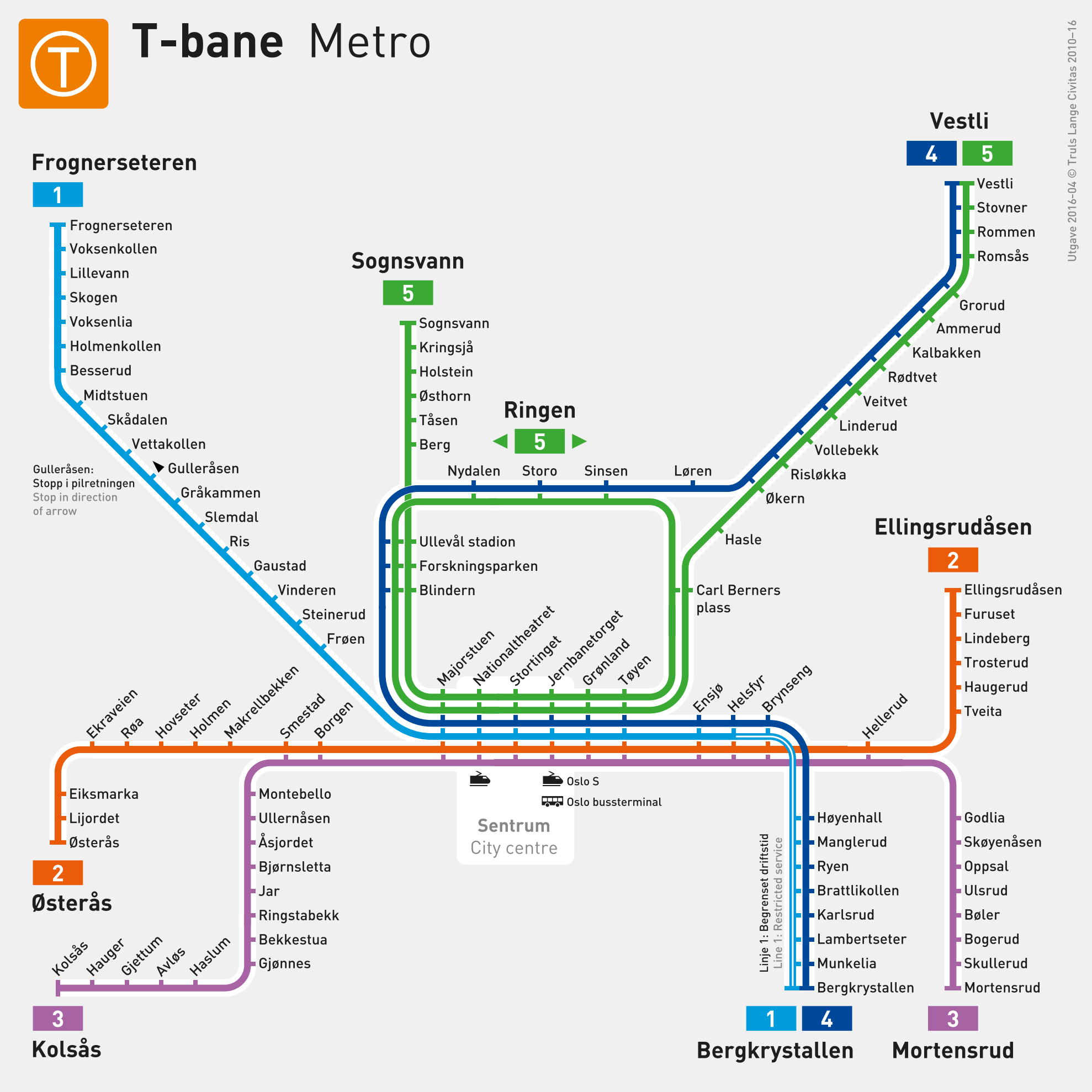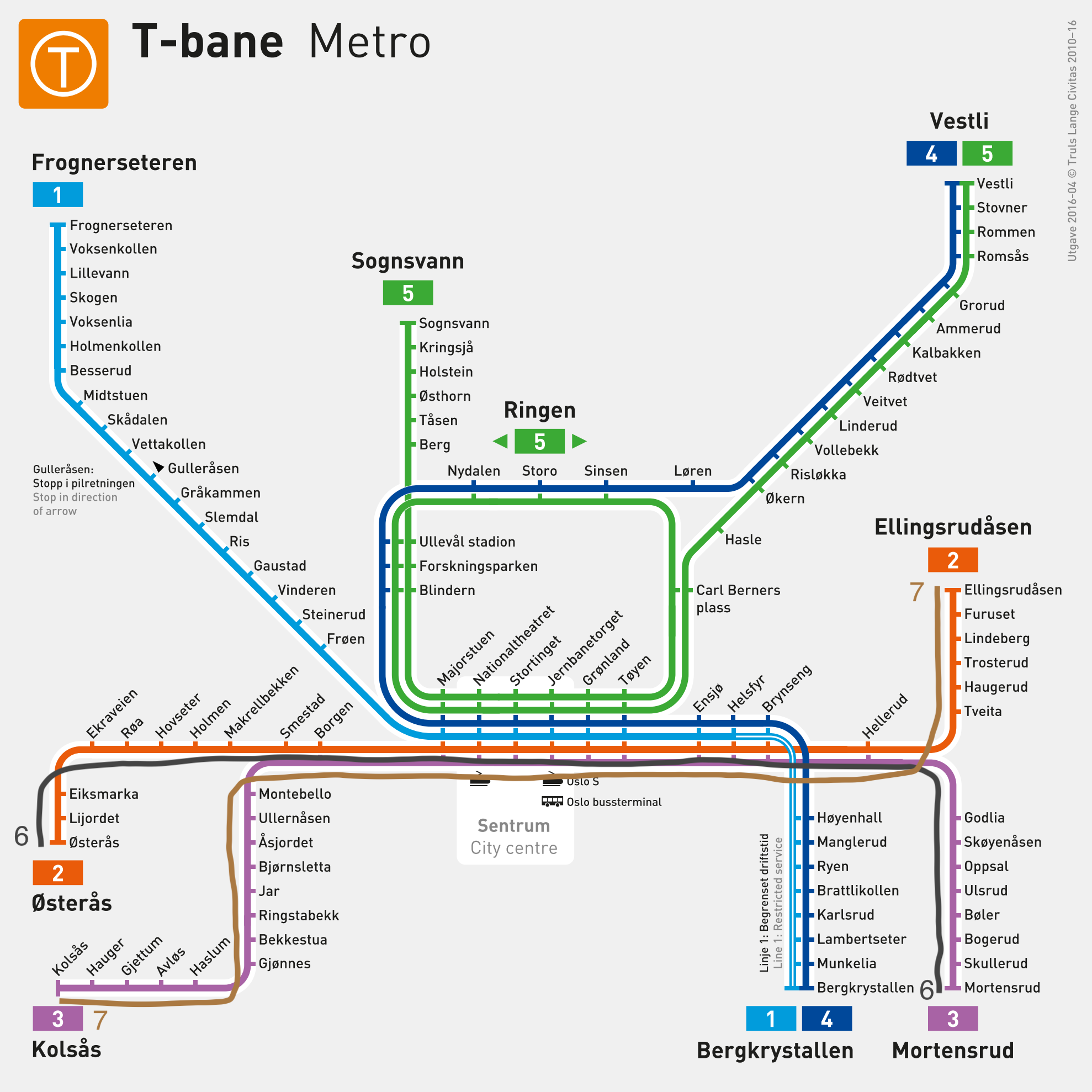When using public transport, we often need to change routes in the middle of the journey. These changes have costs – I can think of the following, but there may be more.
- If we're reading, working, etc. on board, we need to take a break, losing flow.
- We spend time moving from one route to the next.
- We spend time waiting for the next departure.
- There are lots of passengers moving between routes. They take up space and cause queues when on- and off-boarding. This also increases the risk of accidents.
As far as I can understand, we could decrease the necessity of route changes by having multiple routes to the terminals (final stations).
I've reviewed the subway maps of London, New York and Oslo, finding that none of them do this to any significant degree – the terminals usually have just one route.
As an example, let's look at the simplest of the three – Oslo:
Imagine that you're travelling from Østerås (orange, left) to Ellingsrudåsen (orange, right). No changes required – route 2 takes you all the way.
But if you're travelling from Østerås to Mortensrud (purple, bottom right), you would have to change trains from route 2 to route 3 at some point.
Let's imagine that we use some of the capacity used for routes 2 and 3 to serve routes 6 and 7. Route 6 (gray) serves Østerås-Mortensrud, and route 7 (brown) serves Kolsås-Ellingsrudåsen:
With this design, some route changes can be avoided. If we added enough routes, many more route changes could be avoided. Granted, we would have to wait longer for a route that went exactly to the station we want to go, but we would always have the option of taking the first train and then changing like before.
So, I've been asking myself, why don't public transport authorities do this? These are the reasons I can think of:
- Simplicity for passengers: When only one route serves a particular station, you don't have to think about which route you'll board. Also, the maps would be more chaotic.
- Simplicity for transport providers: More routes would mean more difficult (and therefore costly) planning and management.
From my (admittedly ignorant) perspective, the above reasons don't seem sufficient to outweigh the advantages of fewer changes. Have I overlooked some problems with adding more routes? Or am I underestimating the costs and/or overestimating the benefits of more routes?



